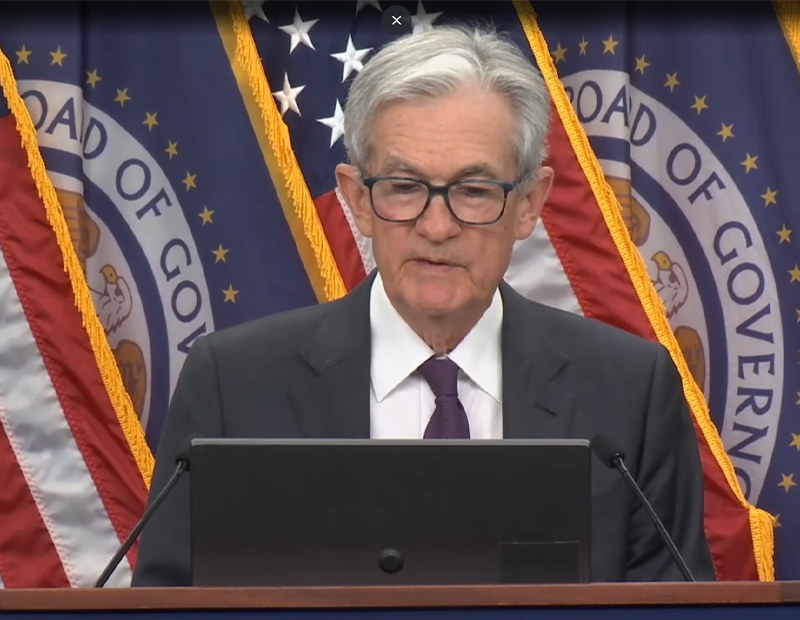Guest Column: CMBS Loans and the Special Servicer – Resolving Defaults
Mark Richardson offers advice on how CMBS borrowers can avoid the pitfalls of a note sale or foreclosure.
Non-performing commercial mortgage-backed security loans and CMBS loans that are approaching maturity will have difficulty securing a workout or refinancing despite today’s historic low interest rates. Underwriting standards are more stringent today than when most CMBS loans were originated and net operating income has, for the most part, not recovered to pre-crisis levels. As a result, many CMBS loans that were originated at the height of the market leading up to 2007 will require significant additional equity to be refinanced or face foreclosure or having their note sold on the secondary market unless a loan modification can be negotiated with the special servicer.
CMBS maturities that fail to qualify for refinancing will remain at elevated levels for the next five years as a result of high issuance volumes leading up to the financial crisis in 2008.
For the past few years, CMBS loans have been maturing in a refinancing environment where economic performance at the property level is largely reduced and underwriting standards are tighter than when the loan was initially placed. Therefore, a borrower looking to refinance a maturing CMBS loan is likely to have difficulty financing the full amount required to pay off the outstanding balance without significant additional equity. This condition is expected to last until 2017, 10 years after the height of CMBS issuances.
Maturities of CMBS loans are expected to remain between $40 billion and $60 billion through 2014 and then increase to more than $100 billion in 2015 and $130 billion in 2016. Maturities will top out close to $150 billion in 2017 before dropping off to near zero in 2018, according to Deutsche Bank and Intex data.
Delinquency rates, a well-known primary indicator of distress, have increased significantly since the financial crisis. According to Trepp L.L.C., CMBS delinquency rates increased from less than 1 percent in 2008 to more than 8 percent by the end of 2009. Since 2010, they have remained above 9.5 percent, hovering around 10 percent throughout 2012. Measured in dollar volume, delinquent and non-performing CMBS loans in special servicing have increased from approximately $14 billion in January 2009 to $90 billion in January 2011 and remained at high levels throughout 2012. These troubled loan volumes are expected to roughly track maturity trends through 2017, which will result in high levels of distressed loans in the coming years.
CMBS loan sales and foreclosed property sales are another primary indicator of the stress in the CMBS sector. Sales of CMBS loans on the secondary market and sales of foreclosed properties have also trended significantly higher since the financial crisis. In 2007, there were less than $500 million worth of loan and foreclosed property sales. This number increased to $750 million in 2008 and then skyrocketed in 2010 to $7.5 billion and again in 2011 to more than $12 billion, according to Deutsche Bank. Trends in loan sales and foreclosed property sales should also track CMBS maturity levels through 2017 or 2018.
With the projected volume of non-performing CMBS loans over the coming five years, borrowers need to be adept at navigating the workout process with special servicers if they are to avoid foreclosure or having their loan sold to athird party that is likely to be very aggressive in enforcing the loan and taking back the underlying asset.
Understanding the limitations within which special servicers must operate along with their responsibilities and motivations, is critical to creating a productive dialogue in a workout. These dynamics are different than a restructuring with a conventional bank that has more incentive to reduce the amount of troubled loans on its balance sheet. The CMBS structure has a different lender and an additional layer of administration between the borrower and the ultimate lender, the bondholder. Like the conventional lender, the special servicer has a responsibility to maximize the recovery for the lender. However, the servicer also has a responsibility to ensure that the payment stream to the bondholders is preserved as much as possible. As a result, the terms and characteristics of a workout with a conventional bank with a CMBS special servicer can look quite different for the same situation. Add in the differing recourse provisions between CMBS and conventional loans and the result is often substantially different motivations for both the borrower and the lender in a workout.
Special servicer bandwidth has been stretched to the limit with the amount of troubled loans transferred from master servicers. As a result, borrowers that do not have the knowledge and experience to effectively deal with special servers and the CMBS structure are often left without the ability to complete a resolution and their properties are lost to foreclosure.
Special servicers will increasingly turn to resolutions that require less time and fewer resources, which still obtain a defensible value for the bondholders they represent. Loans of less than $10 million take up an outsize proportion of time and effort relative to larger loans, and so the smaller loans will naturally be candidates for disposal through foreclosure or note sale rather than a lengthy and costly workout.
Fewer Extensions, More Workouts
Over the past year, special servicers have begun to complete more workouts of troubled loans. Extensions without modification of other terms, a common method of dealing with troubled loans in 2009 and 2010, are becoming less frequent.
Workouts generally consist of one of four alternatives: a loan modification, a discounted note payoff or note purchase, foreclosure or a note sale.
Note sales have become more common as an effective way to dispose of troubled loans for several reasons. The note sale process requires less time and effort than any other form of resolution for the special servicer asset manager, who may have primary responsibility for as many as 50 troubled loans or more. By outsourcing the process to one of several market makers, it can be completed in the relatively short timeframe of 30 days or less. Due to the market clearing mechanism in an open market sale, this path provides a value that is supported if there is a question as to whether the bondholders received the highest possible recovery.
Note sales are also efficient for smaller loans from a portfolio management standpoint. In fact, most of the loans and properties being sold by special servicers are small. The average size of note sales in 2011 was $8.4 million, according to Deutsche Bank. The cost to a special servicer to service and resolve a large or small troubled loan is the same. However, the same percentage loss for a large-balance loan is greater in dollar terms. For a special servicer, focusing on maximizing the recovery of large loans is critical when allocating their stretched resources most efficiently.
When a loan is sold, the borrower is immediately dealing with the third party that purchased the note as its new lender. Note buyers are less focused on the payment stream of the debt than CMBS bondholders. Rather, they are opportunistic investors that are determined to realize an acceptable equity-like investment return. They achieve their return in two ways: buying the note at a high enough discount to justify the risk and realizing a high recovery in the workout or foreclosure of the asset.
The motivations and methods of note buyers are much different than those of special servicers or conventional bank lenders. This type of lender normally has the means and desire to take title and operate a real estate asset if their investment returns cannot be met through repayment of the loan. In order to realize an acceptable recovery, note buyers are likely to be more aggressive than special servicers in negotiating a payoff or modification. Note buyers are also more apt to take over a property through a foreclosure. In fact, many note buyers acquire the loan specifically to pursue ownership of the property through a foreclosure. For a borrower to resolve a troubled CMBS loan, it is critical to utilize the expertise of a financial advisor that has the knowledge and experience necessary to complete a CMBS workout.
Special Skills Required
Resolving a non-performing CMBS loan or one with a maturity default takes a particular approach, which is far different than that needed for a workout with a conventional bank.
In addition, it requires a strong knowledge of the workings of the CMBS servicing structure and the unique relationships between the master and special servicers and the underlying bondholders. An understanding of these relationships and a familiarity with each of the major special servicers improves the likelihood of a successful resolution in favor of the borrower.
A successful workout thus requires that is a member of the borrower’s team have the skills and experience necessary to resolve the defaulted loan with the special servicer.
For borrowers, dealing with CMBS special servicers in a workout or a restructuring is quite different than typical dealings with a lender involving originating, servicing or refinancing performing loans with substantial equity. CMBS special servicers are required to achieve the highest possible recovery of a non-performing loan for the bondholders of the loan. A few of the issues that weigh into analyzing the alternatives available to both borrowers and lenders include:
- The current and future value of the asset;
- Operating cash flow of the property both today and in the years leading up to maturity along with the assumptions underlying these projections;
- The potential for the borrower to bring additional capital; and
- The present value of each alternative.
In order to avoid the pitfalls of a note sale or foreclosure, CMBS borrowers should approach a default situation adhering to several practices. Among them, a borrower must:
- Primarily, maintain transparency with the special servicer. A lender’s distrust of a borrower will adversely affect the relationship and may cease negotiations. A borrower who acts suspiciously or withholds information will raise red flags, which can result in a lender taking rash measures, such as pursuing foreclosure or selling the note.
- Provide details of the current financial condition of the property. Special servicers may have different perceptions based on old financial information.
- Remain professional and straightforward while aggressively attacking the problems and issues. Avoiding an abrasive, acrimonious tone is a key element in achieving a positive resolution.
- Not threaten the special servicer with liability litigation. This will cease negotiations and force the special servicer to turn to attorneys.
- Be proactive and do not wait for the special servicer to take the initiative. Absent productive interaction toward resolution, special servicers often make unilateral decisions without consulting the borrower, and they can have severe consequences. Typically, the special servicer will not act first in a negotiation but rather will simply move forward in appointing a receiver and initiating the foreclosure process.
- Have a team member or financial advisor who can develop alternatives in an objective and defensible manner and negotiate the optimal alternative for both the lender and the borrower.
- Conduct a negotiation that emphasizes recovery to the lender, not just a stabilized situation for the borrower. In addition, it is important to demonstrate the benefits and costs to both lender and borrower of each alternative, with detailed analysis to prove out those benefits and costs.
- Be sure that settlement proposals take proper account of the lender’s alternatives in a note sale or foreclosure action. A special servicer must have considered every alternative to ensure that the alternative with the highest recovery to the bondholders is selected.
Resolving a defaulted CMBS loan with a special servicer can be costly and time consuming for unprepared borrowers. Successfully resolving a defaulted CMBS loan and avoiding the pitfalls of a note sale or foreclosure requires specialized experience and a structured, well-planned strategy. By taking the right approach with a team that includes the appropriate skills, a borrower can greatly enhance the likelihood of success.
Mark H. Richardson is a principal at Huntley, Mullaney, Spargo & Sullivan Inc., where he represents borrowers and investors in real estate debt restructuring, loan workouts and raising new capital. The author may be contacted at mrichardson@hmsinc.net.








You must be logged in to post a comment.